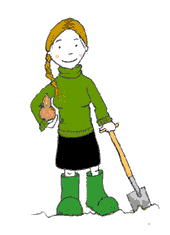
With spring getting up to speed most of us are looking at seeds more than harvesting, but the good old chive plant is at is best right now, I have just used a little on my potato salad. It can also be dry-frozen without much impairment to its taste, giving you the opportunity to store large quantities harvested from your own patch.
Chives have long, green, hollow and grass like leaves that grow from the bulb. The bulbs will grow close together in clusters. The chive ‘grass’ can reach a height of about 22cm (9 inches).(some places state that this is much longer but to date I have never seen a 20 inch chive!) Chives have purple ‘pom-pom’ flowers, that flower for two months over the summer.
Chives belong to the Allium family the same family as garlic, onions, leeks and shallots. English chive derives from Latin cepa “onion” via Middle English cyve or cheve, loaned from Old French cive.
Chives History and Legend
The ancient Chinese are the first to documented using chives as long ago as 3000 years B.C. and Marco Polo is credited with bringing chives to Europe from China.
Romanian Gypsies have used chives in fortune telling, I still have yet to find out how shuffle these chives and think of your future perhaps?
It was believed that you should hang bunches of dried chives around your house to ward off disease and evil.
Those wacky Romans believed chives could relieve the pain from sunburn or a sore throat. They believed that eating chives would increase blood pressure and and acted as a diuretic. Most sources tend not to agree with these claims.
The Romans also are attributed with bringing chives over to Europe where they now grow wild. In fact chives now grow wild across most of the Northern Hemisphere.
Growing Chives
Chives can be grown from seed in very early spring. However they will need a warm soil temperature so this is not advisable in many countries. Typically Chives need to be germinated at a temperature of 21°C (70°F) and kept moist. It is certainly worth considering germinating the plants indoors in cooler climates then planting out. You may also consider planting them under a cloche. After at least four weeks the young shoots should be ready to be planted out.
The easiest way to cultivate chives is to dig up a good sized clump of them pull the mass of little bulbs apart and replant them. It is suggested that this should be done every 2-3 years.
Keep watered in dry weather. This plant is happiest when in full sun and moist. Chives seem to grow in ok in most soils, as many other plants they will prefer a soil which is high in organic matter and has a pH of 6 to 8.
Cut back if they are looking worse for wear, down to 2.5cm (1 inch) entourages new growth.
Container -The ideal size of container to grow chives indoors is 15-30cm wide x 15-25 cm deep or in old money 6-12 inches wide x 6-10 inches deep. Over the winter month it is worth digging up any chives you have outside to put into containers this ensures a winter crop as they normally die back over the winter
Watch for greenfly on the base of the stems.
To store Chives
Chives loose a lots of their flavour when dried and will benefit more from being frozen. Chop up some shoots and put them into an ice cube tray. Fill with water and freeze. Thawing when needed.
Cream Cheese and Chive Scrambled Egg
Ingredients
4 large eggs
30ml water
2 tablespoons fresh chives, chopped
Pinch of black pepper
2 teaspoons butter
100g light cream cheese, cut in 2cm pieces
pinch of salt to taste
Method
Beat the eggs adding the chives, pepper, salt and water and keep beating until blended.
In a nonstick frying pan melt the butter over medium-high heat, add egg mixture. As egg mixture begins to set around the edges, move it gently toward the centre with a fish slice (spatula) to allow uncooked egg to flow toward sides of pan.
When eggs are partially cooked, add cream cheese and continue cooking one more minute or until eggs are set but still moist, stirring occasionally.
This will serve two as and is pretty nice on toast as a breakfast.
